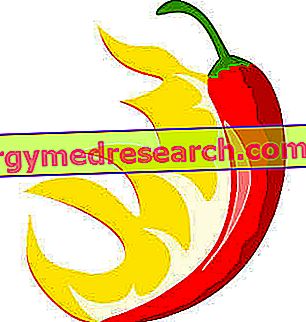Cholesterol being a steroid present only in the cells of the animal kingdom, it is not difficult to distinguish between foods that contain it and foods that are totally free of it (foods without cholesterol).

- Fats from seasoning or conservation, of animal origin (butter, lard, lard, suet, tallow, etc.)
- Milk and derivatives (milk of any animal, yogurt, ricotta and cheese)
- Flesh (muscles and fifth quarter)
- Fish and fishery products (all fish, molluscs and crustaceans)
- Eggs (all eggs)
It is not however rare to find discrete amounts of cholesterol also in foods belonging to other groups that need the addition of ingredients of animal origin:
- Fresh pastries (ALL the basics of fresh pastries)
- Dry pastry (biscuits, meringues)
- Baked goods (crackers and the like, breadsticks, some types of bread)
- Egg pasta (dry and fresh)
The excessive intake of dietary cholesterol (which represents 30% of circulating cholesterol) associated with that of saturated or hydrogenated fatty acids (especially in the trans form) is a determining factor in the onset and maintenance of hypercholesterolemia; this kind of alteration involves the excessive elevation of LDL lipoproteins (low density lipoproteins) to the detriment of those that instead remove peripheral cholesterol and lead it to the liver, HDL (high density lipoprotein). This determines an increase in cardiovascular risk and therefore in the manifestation of highly invalidating pathological events (cardiac or cerebral ischemia) or premature death.
Foods with cholesterol must be evaluated based on the net content of the steroid (per 100g of edible portion), as the relative concentrations can vary significantly from one food or group to another. It can be defined with certainty that the elements characterized by the highest cholesterol content (hereinafter expressed per 100 g of product) are:
- Some offal: brain (> 2000mg per 100g), kidney (350-400mg), liver (about 200mg) and heart (> 150mg)
- All eggs (at least 370mg)
- Animal fats for seasoning: butter (250mg), lard (about 100mg) etc.
- Spoon cakes and pastry in general [cholesterol content not well determined but certainly very high]
- Crustaceans: prawns (150mg), canned crab (100mg) etc.
- Bivalve molluscs: oyster (150mg), mussel (120mg) etc.
- All aged dairy products (ranging from 70 to 110mg)
- Fatty or poultry meats with skin (ranging from 70 to 90mg)
Although it is not advisable to frequently consume foods with a lot of cholesterol, it is advisable to specify that the above values refer to a net weight of 100g; therefore, foods with a high consumption frequency MA characterized by very low weights such as Parmesan cheese (5-10g on the first course) do not represent a risk factor for hypercholesterolemia. On the contrary, foods that often represent a source of abuse are eggs, fatty meats, other cheeses used as dishes, seasoning fats and desserts.
In the case of pre-existing cholesterolemic changes (genetic, familial or environmental), it is advisable to moderate the exogenous cholesterol intake to no more than 200mg / day, and to accompany foods containing it with other foods that instead counteract absorption, among these: legumes, vegetables, fruit and soybean oil. They bring phytosterols, fiber and lecithin which dilute, imprison or bind the food cholesterol in the intestine, hindering their absorption; in parallel, many foods of plant origin contain polyphenols and polyunsaturated fatty acids that contribute significantly to the reduction of blood cholesterol and to the optimization of the HDL / LDL ratio.
Video: The correct diet to lower cholesterol
Directly from the MypersonaltrainerTv studies, all the secrets to naturally lowering cholesterol, described in a video as long (47 minutes) as exhaustive. Not to be missed!
Watch the video
X Watch the video on youtube



